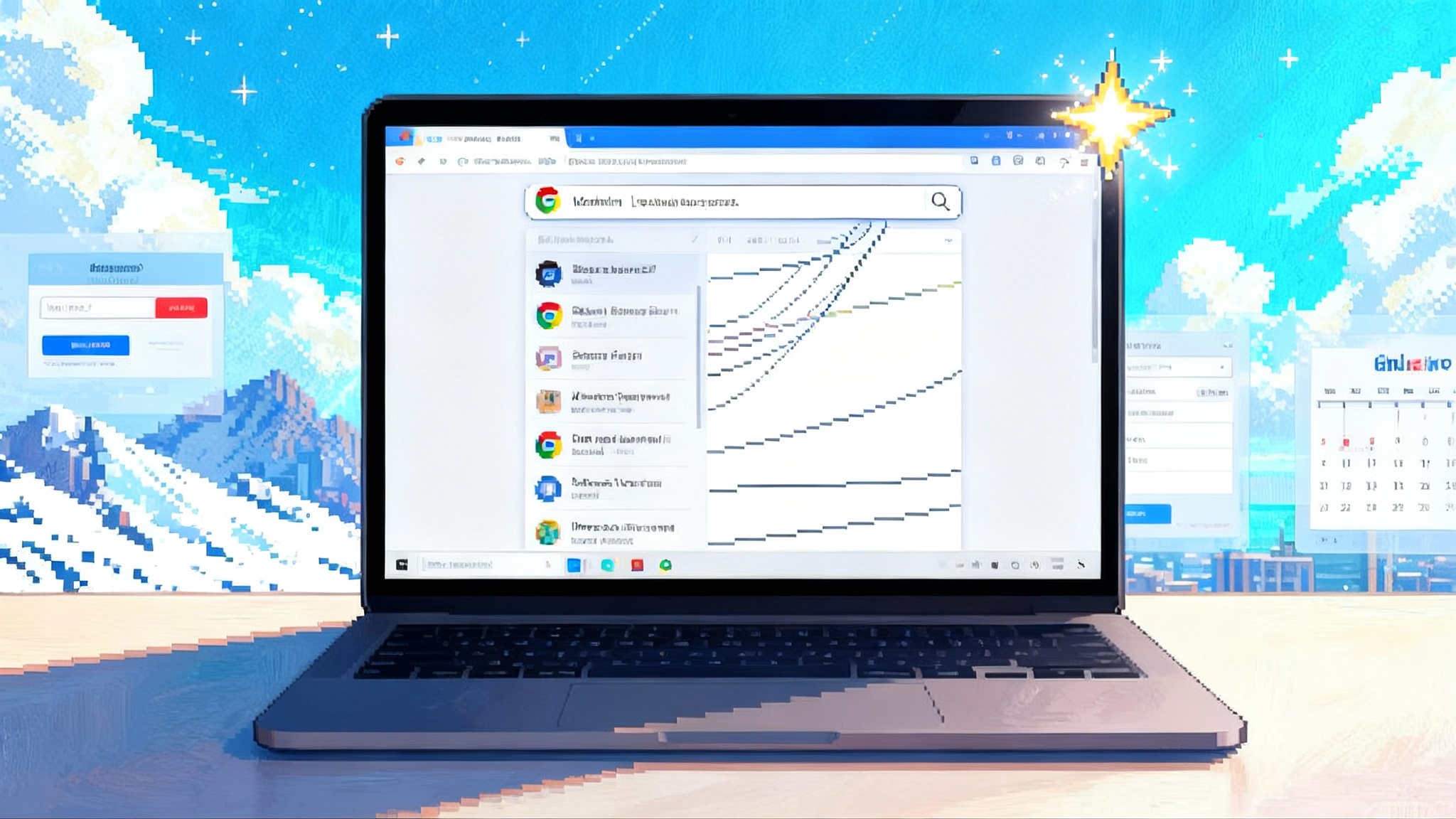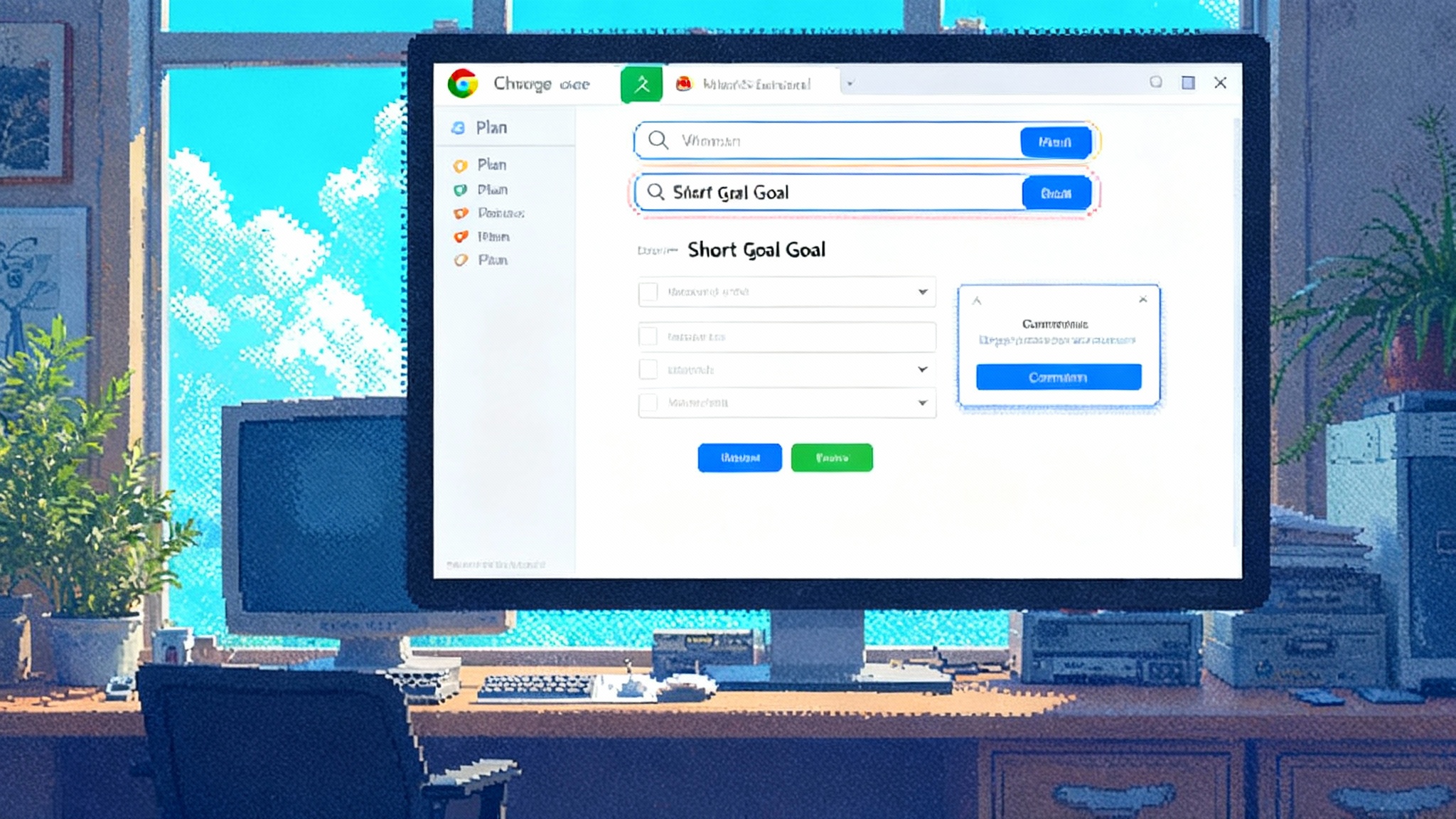Chrome goes agentic: Gemini turns the browser into a teammate
Google is putting Gemini inside Chrome with AI Mode in the address bar, cross‑tab reasoning, and upcoming on‑page task automation. Here is what it means for SEO, ecommerce, privacy, and how to make your site agent‑readable now.

The browser just became an agent
A quiet shift happened this week. Google started weaving Gemini directly into Chrome for U.S. desktop users in English. There is a Gemini button that understands the page you are on. There is AI Mode entering the address bar so you can ask complex questions without leaving the tab. Cross‑tab reasoning is live so the model can synthesize across what you have open. And Google previewed the next step that matters most: on‑page task automation. The browser is no longer just a viewport. It is an execution surface.
The short version: Chrome is turning into an agent platform that can read, reason, and act on the web on your behalf. That changes how people discover, decide, and do. It will reshape search traffic. It will compress buying flows. It will force new consent patterns. It will reward sites that are agent‑readable and punish those that are not.
Google framed this as a reimagining of Chrome with an AI assistant inside the browser, plus AI Mode in the omnibox for complex, context‑aware queries. See Google’s announcement for the specifics in plain terms at Chrome reimagined with AI. (blog.google)
What actually shipped, and what is next
Here is the practical breakdown of the stack as of September 18–19, 2025.
- In‑browser Gemini. A Gemini icon sits in the top right. It can explain the current page, pull highlights, and keep context as you move. It works across multiple tabs so it can compare, summarize, and organize information without copy and paste. Google says this is a core part of the new Chrome experience. (blog.google)
- AI Mode in the address bar. You can type longer, specific questions into the omnibox and get an AI Overview with follow‑ups without running a classic query first. This is rolling out in the U.S. in English. (blog.google)
- Cross‑tab reasoning limits and enterprise rollout. For admins, Google notes that Gemini in Chrome can use context from up to 10 tabs and that general availability for Workspace starts no sooner than October 2, 2025. Admin toggles are live now to pre‑configure access and controls. See the Workspace rollout details and admin controls. (workspaceupdates.googleblog.com)
- Agentic actions next. Google is previewing on‑page task automation so Gemini can execute multi‑step tasks like booking appointments or ordering groceries with user approval. Early descriptions include adding items to carts and pausing for confirmation at checkout. (macrumors.com)
Put simply, discovery is becoming conversational, comparison is becoming automatic, and tasks are about to become delegations.
From “open a tab” to “get it done”
Until now, most browsing was a chain of manual steps. Search, skim a few tabs, copy notes into a doc, then run four different flows to buy, book, or apply. Gemini in Chrome compresses that chain. It already reads across tabs. Soon it will act inside them. The browser becomes a runtime that can call site actions with your consent.
That mental flip has big consequences. It moves value upstream from the web page to the intent. It pressures every middleman whose value was page navigation. It rewards sites that expose clear data and predictable actions to an agent. It penalizes any flow that relies on brute force UI or brittle scripts.
Search and SEO: answers first, links second
AI Mode in the omnibox introduces a pattern that shifts attention from links to answers. Users ask a complex question and stay in the bar. They get an AI Overview. They ask a follow‑up. Only when they press in do they land on a page. If your content is the source of truth for that overview, you still win. If not, fewer people ever reach you.
What to expect over the next quarters:
- Fewer shallow clicks. Navigational and listicle queries that AI can handle will compress. Expect fewer impressions from head and torso terms. The lift for long‑tail will come from being cited by the model, not from ranking position alone.
- Higher quality landings. The users who do click will come with sharper intent. They will expect immediate answers and clear actions. Time to value must be fast.
- Authoritative structure matters. Models rely on structured signals to ground answers. You need precise schema for entities, offers, how‑tos, FAQs, and reviews. You also need consistent IDs across pages so cross‑tab reasoning recognizes that Page A and Page B refer to the same product or location.
- Content designed for agent quoting. Use short, canonical fact blocks with dates, numbers, and definitions. Place them in predictable locations with anchors. That increases your odds of being cited in an AI Overview or a Gemini summary.
Five practical SEO adjustments now:
-
Expand JSON‑LD beyond Product and Article. Add Organization, Person, FAQPage, HowTo, Review, Offer, AggregateRating, BreadcrumbList, Course, Event, LocalBusiness, JobPosting depending on your domain. Include price, availability, condition, shipping, return policy, and warranty where relevant.
-
Create machine‑addressable answers. Add explicit IDs to sections and use stable anchors. Write a two sentence canonical definition at the top of each page. Use semantic HTML and ARIA roles. Avoid burying key facts behind tabs or accordion content that is not in the DOM.
-
Publish comparison and spec tables as actual HTML tables with column headers, units, and column scope. Avoid images of tables.
-
Keep internal linking clean with descriptive anchors and consistent URL patterns. Make sure canonical tags reflect your true primary page.
-
Measure the new funnel. Track AI‑referred traffic separately where possible by using server‑side attribution, unique share links in your own UI, and post‑view conversion studies. Expect fewer pageviews per session and more direct action.
Ecommerce and affiliate flows: the last mile gets automated
If the browser can add items to a cart and stop just before payment, the last mile changes. Affiliate sites that steered clicks to merchants now face an agent that can perform the cart assembly inside the merchant site. Some affiliate value shifts from click brokerage to trusted advice and bundles.
For merchants, this is good if your flows are agent‑friendly. It is bad if your site relies on quirky UI or heavy anti‑automation. The agent will act like a user with your consent prompts in the loop. If your cart requires 9 hidden steps and two popups, the agent will stumble.
Merchant playbook:
-
Expose a minimal cart API. Support create cart, add line item by SKU, update quantity, apply code, list shipping options, and generate checkout URL. Make endpoints idempotent. Return clear error codes. Publish a small OpenAPI spec so an agent can discover actions.
-
Keep checkout deterministic. Use server‑driven steps with predictable URLs. Avoid element IDs that change per session. Prefer web‑standard payment flows like the Payment Request API and one‑click wallets like Google Pay and Apple Pay.
-
Support delegated authentication. Offer OAuth 2.0 with PKCE or device code for trusted agents, not just brittle form fills. If that is not ready, at least make your login form accessible with clear labels and no obfuscated inputs.
-
Preserve attribution without cookies. Use server‑to‑server postbacks, unique order‑level codes, and coupon code mapping. Do not bet on third party cookies surviving. Tie affiliate credit to order metadata that survives a headless cart.
-
Publish inventory and price truth. Keep a product feed that includes SKU, GTIN, price, availability, variant attributes, and shipping. Mirror those details in on‑page schema so the agent can reconcile what it sees with your feed.
Affiliate and review publishers should shift from “20 best X” to “build me a bundle for Y constraints.” The winners will provide opinionated picks with structured reasons and exportable lists that an agent can take straight to carts across merchants.
Privacy and consent: the new prompts
A browser agent can see what you see and do what you allow. That requires new guardrails.
-
User‑level consent. Expect task flows that pause at key moments. For example, the agent compiles a cart, then prompts you before checkout. The task log should show what it changed and where.
-
Admin‑level controls. In Workspace, admins can pre‑configure Gemini in Chrome, see usage reporting, and control availability. Google notes that GA starts no sooner than October 2, 2025, and that context draws from up to 10 tabs. That sets expectations for how much the agent can “see” at once. (workspaceupdates.googleblog.com)
-
On‑device vs cloud. Some protections will run locally, like scam detection with lighter models. Deep reasoning and agentic action planning will often run in the cloud. Design your consent copy and telemetry so that users understand which parts of a task may leave the device.
-
Site control is limited when the user delegates. Robots rules control crawling. They do not stop a user from instructing their browser to perform an action. If you need to restrict automation, use auth gates, rate limits, and anomaly detection. Also publish clear terms that govern automated use by users and agents acting on their behalf.
-
Just‑in‑time consent UX. For sites that handle sensitive changes, add your own confirmation prompts for actions like delete, transfer, or high‑value orders. Keep those prompts accessible and unspoofable. Avoid dark patterns, since agents will learn to route around them or surface warnings.
Make your site agent‑readable now
Here is a concrete checklist. Most teams can ship a first pass in 4 to 8 weeks.
Data and content
- Publish JSON‑LD at page level with precise schema for your domain. Keep it in sync with the visible content and with any product feed.
- Normalize identifiers. Use the same SKU, event ID, or job ID in your feeds, your URLs, and your on‑page schema.
- Add machine‑friendly anchors for key sections. Use IDs like #specs, #ingredients, #returns.
- Include policy metadata. Expose shipping, returns, warranty, and support as structured data. Link to canonical policy pages.
Actions
- Provide an actions catalog. At /well-known/actions.json publish the verbs you support with hints. Start with add_to_cart, start_checkout, book, reschedule, cancel, apply_coupon, subscribe, unsubscribe. Point to OpenAPI specs where available.
- Stabilize forms. Use labels, names, and predictable DOM structure. Avoid canvas‑only buttons. Use aria-labels for actionable controls.
- Idempotent endpoints. Make POSTs safe to retry. Include action IDs in responses.
- Error hygiene. Return clear machine‑readable errors and tips to recover.
Authentication and trust
- Support OAuth 2.0 with PKCE and OIDC or device code for delegated actions. Scope permissions tightly. Offer short‑lived tokens.
- Enable passkeys. Keep a fallback path that is accessible for agents that must fill forms with user approval.
- Rate limit by action and user, not just IP. Agents will retry. Do not treat that as abuse if it is within bounds.
Measurement and attribution
- Move to server‑side conversion reporting. Use order‑level identifiers and signed webhooks. Keep client signals minimal.
- Preserve affiliate credit with coupon mapping and server postbacks. Document your attribution logic so partners can align.
Security and integrity
- Detect risky automations. Flag high‑velocity cart changes, payment instrument swaps, or address changes. Require secondary confirmation.
- Keep content watermarked where relevant. Agents will pull and quote. Make it easy to attribute and license.
A 30‑60‑90 day plan for product teams
Day 0–30
- Audit your site for agent‑readability. Score pages on structured data coverage, action discoverability, and flow determinism.
- Ship missing schema for your top 100 pages by traffic and your top 100 by revenue.
- Publish your first actions catalog and seed add_to_cart, start_checkout, and apply_coupon.
Day 31–60
- Launch a cart API and a simple booking or subscribe action if your business supports it.
- Add OAuth 2.0 with PKCE and scopes for read_profile, manage_cart, and start_checkout.
- Move at least one key conversion to server‑side attribution.
Day 61–90
- Expand actions to reschedule, cancel, and returns initiation.
- Release admin tools to view agent actions in logs with full audit trails.
- Run an A/B test with agent‑friendly flows vs control. Measure drop in time to value, error rate, and conversion.
What changes for publishers and marketplaces
- Comparison publishers. Shift from mass lists to constrained recommendations. Provide exportable bundles and machine‑readable reasons. Expect fewer raw clicks but higher intent referrals.
- Marketplaces. Expose structured feeds and action endpoints per merchant. Standardize your cart API so an agent can push a basket across sellers with one check.
- Travel and local. Publish date‑bounded availability, cancellation windows, and refund rules as schema. Expose reschedule and cancel endpoints.
Open questions to watch
- Consent standards. We need idioms for in‑browser agent actions with consistent prompts and logs. Expect emerging conventions that look like extension permissions.
- Attribution norms. If an agent performs an action across sites, who gets credit. Expect a mix of server‑side postbacks and code based attribution.
- Ecosystem standards. Will there be a formal actions manifest or a schema.org extension for common verbs. If so, adoption will snowball.
The bottom line
Gemini inside Chrome is not just a set of shortcuts. It is a new control plane for the web. AI Mode changes how people ask. Cross‑tab reasoning changes how they compare. Agentic action will change how they complete tasks. The winners will design for agents as first class users. The browser is becoming a teammate. Build like it.
One more note for teams planning budgets and rollouts. Google’s own guidance sets expectations on regional and language limits during the initial rollout, plus the 10‑tab context window for Gemini in Chrome and the staged Workspace availability. Plan for a U.S. English first wave and staged expansion. (blog.google)



